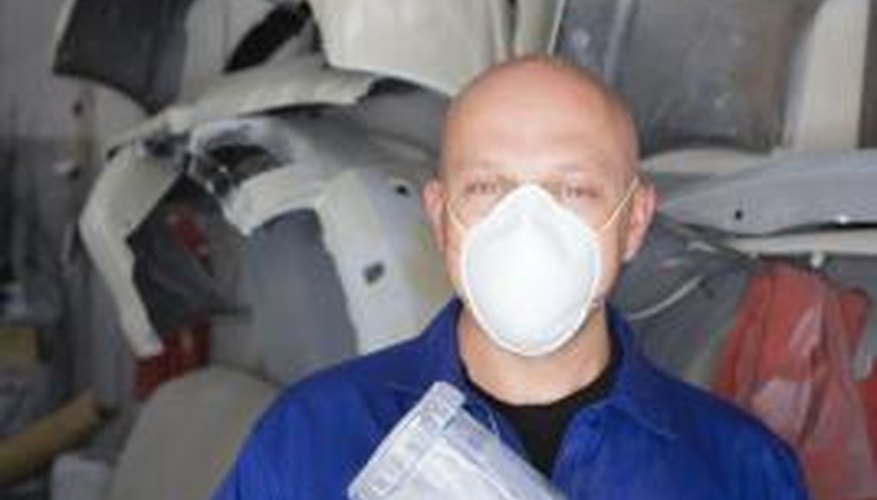Gel coat is a type of protective resin finish that is used for coating many surfaces, including different automotives and boats. While this finish is durable, it can be damaged. However, adding a new layer of gel coat can cause undesirable texturing effects, such as "orange peel." There are several causes for orange peel, and knowing the causes will help you avoid this effect.
Application Materials
Gel coat can be applied in a number of ways. If thinned, it can be sprayed onto a surface with an automotive spray gun or another type of spray paint gun. It can also be brushed or rolled onto a surface. However, spraying gel coat always causes a small amount of texture, regardless of how carefully the painter sprays it. A roller is an easy way to apply gel coat, especially for someone who is not trained to handle the safety procedures required for spraying resin materials, but naturally makes orange peel and bubbles due to the texture of the roller.
- Gel coat can be applied in a number of ways.
- If thinned, it can be sprayed onto a surface with an automotive spray gun or another type of spray paint gun.
Thinning
Gel coat is a mixture of resin and catalyst, and creates a very thick and viscous material. To be used in a spray gun, gel coat must be thinned. If gel coat is put directly into a spray gun, it will create a thick, tacky and textured surface, and may clog the spray gun. Improperly thinned gel coat is a major cause of excessive orange peel. Gel coat can be thinned with a mixture of styrene and acetone, although no more than 10 per cent acetone should be added, as it will dull the finished coating. Other additives are also appropriate for thinning gel coat.
- Gel coat is a mixture of resin and catalyst, and creates a very thick and viscous material.
- If gel coat is put directly into a spray gun, it will create a thick, tacky and textured surface, and may clog the spray gun.
Application Technique
While gel coat is very likely going to have a texture regardless of the skill of the painter, having a good technique reduces the amount of orange peel. Thickly applied coats, pausing too long at one area, and moving too quickly or too slowly all cause texture and pinholes in gel coat. Similarly, texture can occur when gel coat is not applied under ideal conditions. Gel coat cures faster in heat, which can be desirable, but if it is applied when the weather is too hot or if it is applied in direct sunlight, the surface can cure too fast and cause texture.
- While gel coat is very likely going to have a texture regardless of the skill of the painter, having a good technique reduces the amount of orange peel.
- Gel coat cures faster in heat, which can be desirable, but if it is applied when the weather is too hot or if it is applied in direct sunlight, the surface can cure too fast and cause texture.
Preventing and Repairing Orange Peel
Proper preparation is the way to ensure best results when applying a new layer of gel coat. The surface to be coated must be very clean, completely free of any wax, smooth and well-sanded. Gel coat can also be sanded once it has cured, which reduces orange peel. Properly thinning the gel coat will prevent orange peel as well. In addition, many companies sell additives that can be mixed into gel coat to help create a smooth, even finish without undesired texture. If gel coat is applied using a spray gun, a suction spray gun creates less orange peel than a gravity spray gun.
- Proper preparation is the way to ensure best results when applying a new layer of gel coat.
- Properly thinning the gel coat will prevent orange peel as well.
